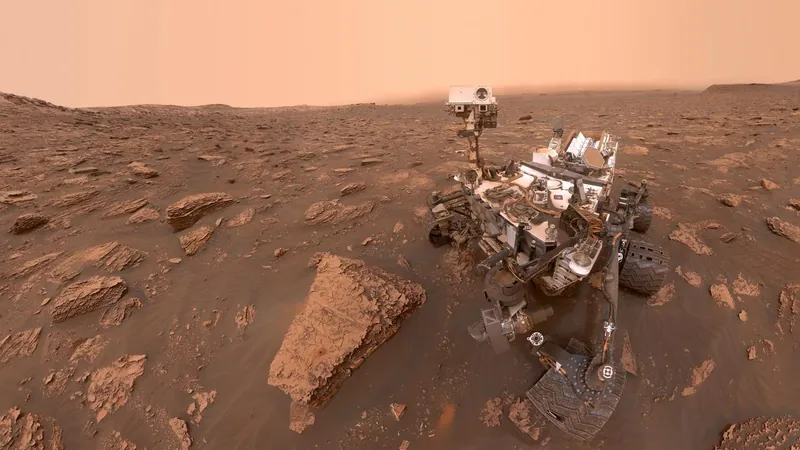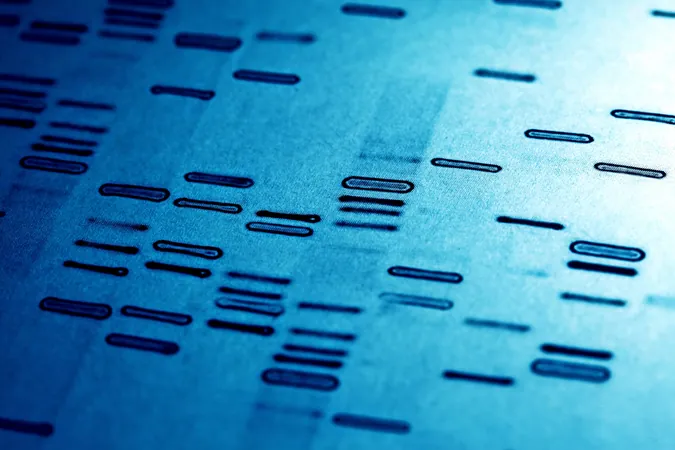
Mars Discovery: Curiosity Rover Unveils Largest Carbon Chains, Signaling Possible Ancient Life!
2025-04-19
Author: William
NASA's Curiosity rover has made a groundbreaking discovery on Mars—unearthing the longest carbon chains ever found on the planet. This exciting find may hint at the potential for ancient life on the Red Planet!
A study released on March 24 reveals that molecules with up to twelve carbon atoms were identified in a 3.7-billion-year-old rock sample from Yellowknife Bay, a site that was once a Martian lakebed. This astonishing research was published in the prestigious Proceedings of the National Academy of Sciences.
These lengthy carbon molecules are believed to be derived from fatty acids, which on Earth are typically created through biological processes. While it’s possible these long chains could form through non-biological means, their presence raises intriguing questions about whether life ever thrived on Mars.
Caroline Freissinet, an analytical chemist involved in the study, emphasized the significance of this finding. If life did emerge on Mars billions of years ago, remnants of that ancient life may still be detectable today, providing unprecedented insights into our neighboring planet’s history.
Curiosity’s Epic Journey: Unraveling Mars’ Mysteries
Since landing in Gale Crater in 2012, the Curiosity Rover has traveled about 20 miles, exploring diverse locations including the intriguing Yellowknife Bay and Mount Sharp, a towering 3.4-mile-high mountain.
The sample analyzed in this pivotal study, dubbed "Cumberland," was drilled in 2013 and previously noted for its rich composition of clay minerals, sulfur, and nitrates. Remarkably, despite extensive examinations over the years, the hydrocarbon chains eluded detection until this recent analysis.
Fortuitously, researchers stumbled upon these molecules while implementing a new technique aimed at identifying amino acids. By heating the sample to over 2,000°F, they accidentally revealed the hidden fatty molecules instead.
A New Analytical Breakthrough
Freissinet expressed pure excitement at the unexpected results: "The thrill was immense. We had previously analyzed this sample numerous times, yet the application of a new strategy led to this remarkable discovery!"
The potential fatty acid origins of these carbon chains, including undecanoic and dodecanoic acids, suggest they could indicate past biological activity. On Earth, similar molecules are primarily generated through life processes, but they can also form naturally.
Researchers noted that longer carbon chains typically point to biological origins, enhancing the case for Martian life.
Gale Crater: A Past Habitat for Life?
There’s compelling evidence that liquid water flowed in Gale Crater for millions of years, possibly creating the ideal conditions for life-sustaining chemistry. Daniel Glavin, another NASA researcher, remarked, "This geological history suggests a fertile environment where life could have flourished."
While the discovery marks a significant victory for the Curiosity mission, it opens the door to future research. The team is keen to return Martian soil samples to Earth to conduct further analyses that could illuminate the mystery of life beyond our planet.
"We’re poised for a monumental leap in understanding Mars. Bringing back samples could finally answer the burning question: Did life ever arise on Mars?" Glavin concluded.









 Brasil (PT)
Brasil (PT)
 Canada (EN)
Canada (EN)
 Chile (ES)
Chile (ES)
 Česko (CS)
Česko (CS)
 대한민국 (KO)
대한민국 (KO)
 España (ES)
España (ES)
 France (FR)
France (FR)
 Hong Kong (EN)
Hong Kong (EN)
 Italia (IT)
Italia (IT)
 日本 (JA)
日本 (JA)
 Magyarország (HU)
Magyarország (HU)
 Norge (NO)
Norge (NO)
 Polska (PL)
Polska (PL)
 Schweiz (DE)
Schweiz (DE)
 Singapore (EN)
Singapore (EN)
 Sverige (SV)
Sverige (SV)
 Suomi (FI)
Suomi (FI)
 Türkiye (TR)
Türkiye (TR)
 الإمارات العربية المتحدة (AR)
الإمارات العربية المتحدة (AR)